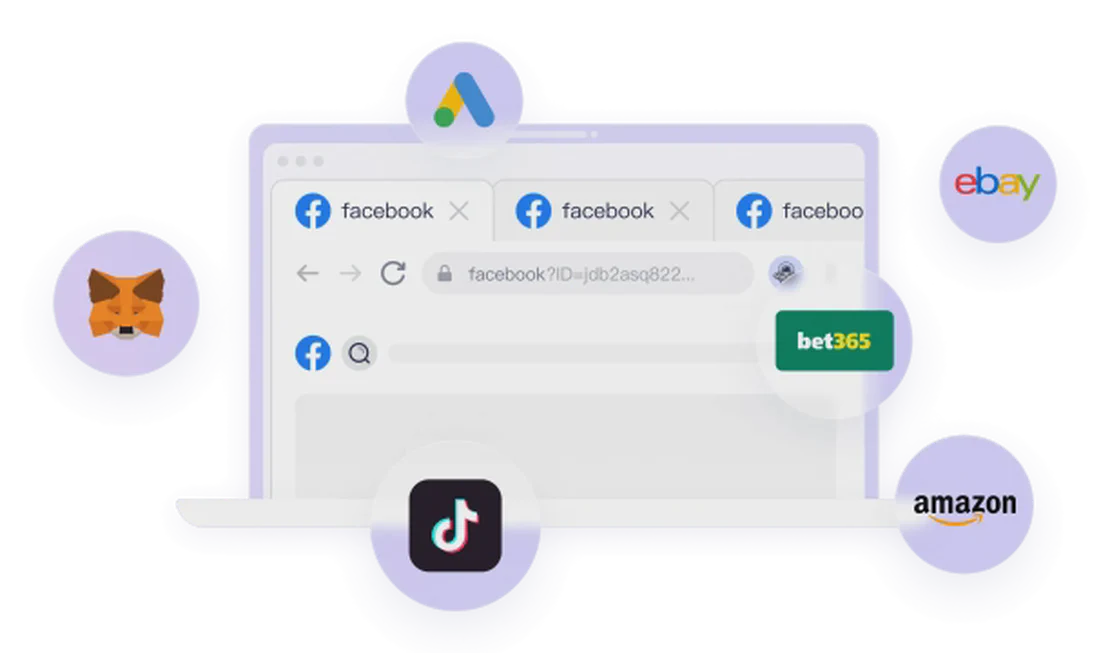When Walmart’s market cap surged to nearly $1 trillion and its stock chart began to look identical to Nvidia’s—one climbing almost vertically—the world was left baffled. After all, this company’s core business remains its global network of physical superstores and supermarkets—a low-margin, slow-growth industry.
Just a few years ago, Walmart was considered the classic “defensive stock,” with its share price hovering in place for nearly two decades. However, starting in 2018 and exploding in 2023, the retail giant seemed to be injected with a new kind of magic. Its stock price shot up, pushing its Price-to-Earnings (P/E) ratio to over 40, on par with the hottest tech companies in Silicon Valley. What on earth is going on? How can a simple grocer be imbued with the soul of a tech giant?
The answer lies in Walmart’s complete “self-disruption.” It has subtly shifted its core focus from “selling products” to “selling data” and “selling traffic.” This is not just a business model upgrade; it’s a profound revolution in strategic thinking.

Phase 1: The Sleeping Giant - The “Channel is King” Era
To understand Walmart’s resurgence, we must first look at the predicament it faced. From the early 2000s to around 2017, with the explosive growth of e-commerce, the physical retail industry was declared “dead.” It was widely believed that a future represented by Amazon would completely replace “brick-and-mortar” stores like Walmart.
“Showrooming”—where customers check out products in-store only to buy them cheaper online—became the final straw that broke the back of many traditional retailers like Sears and Toys “R” Us. In that era, investing in Walmart seemed irrational, as it had no growth potential and its business model seemed on the verge of collapse. Walmart’s stock price also reflected this pessimism, hovering around $15 for nearly 20 years, even as its revenue and profits grew steadily.
Phase 2: Awakening and the Gamble - Seeing Online as an Opportunity, Not a Threat
The turning point came around 2018. People gradually realized that while e-commerce was powerful, its market share was only 24% of total retail sales and had plateaued. The “experience” that physical retail offers is irreplaceable online: the joy of shopping with friends and family, the reassurance of touching and comparing products, and the immediate satisfaction. These are things the digital world cannot replicate.
Walmart began to understand that e-commerce didn’t have to be a competitor; it could, in fact, be a massive growth engine. So, it began to make a bold bet.
- Launch of the Walmart+ Membership Program: This was more than just a knockoff of Amazon Prime; it was a crucial customer relationship lock-in. By offering perks like unlimited free delivery and better fuel savings, Walmart locked customers into its own ecosystem, achieving more stable, higher-frequency cash flow.
- Development of the Walmart Pay System: Consumers were initially confused, wondering why they couldn’t just use the more convenient Apple Pay. Walmart’s intention was incredibly far-reaching: by building its own payment system, it collected the most valuable consumer data—what people buy, how much, when, and how often. This data is the goldmine for all future business decisions.
But these two steps were merely the prelude.
Phase 3: The Ultimate Transformation - From Selling Goods to “Selling Data”
If the previous two steps were “defense,” this step marks the turning point for the “offense.” Walmart’s strategic core shifted fundamentally from “how to sell products better” to “how to leverage the data generated from product transactions to create higher-value revenue.”
This high-value business is advertising.
The data is highly compelling: In Q1 2025, Amazon’s $126.4 billion in retail revenue generated less than $7 billion in profit. However, its $13.9 billion in advertising revenue yielded a profit of around $11 billion, thanks to typical profit margins of 75-80%. Wall Street isn’t chasing how many products Walmart sells; it’s chasing how many “ad impressions” Walmart sells.
Walmart’s trump card, unmatched by any other advertising platform, is its vast, precise, and real-world offline consumer data. It knows which in-store shelf you linger in front of longer. Thanks to Bluetooth beacon technology, it can even send you a mobile push notification with relevant coupons and ads as you approach a product.
All of this is consolidated into the “Walmart Connect” platform. Companies—from major brands to local small businesses—can pay Walmart to have their products precisely targeted to their desired customer base. These ads are everywhere on the Walmart.com website, the mobile app, in-store radio, self-checkout screens, and even your payment confirmation receipts.
The financial return from this strategy has been staggering. In the fiscal year 2024, Walmart’s revenue grew by only 5.5%, but its profit soared by 32%, jumping from $11.6 billion to $15.5 billion. The core drivers were the growth in e-commerce (+27%) and the explosion in advertising (+28%). Although advertising revenue was just 0.5% of its total revenue, its ~50% profit margin injected a powerful growth engine into the entire group, convincing investors to pay a tech-company-like valuation.

Risk and Bubble: Can the Retail Giant’s “Tech” Dream Last?
However, Walmart’s story is not without flaws. It is facing severe challenges that cast a shadow over its high valuation.
- An Identity-Straddling Customer Base: In pursuit of the high profits from its advertising business, Walmart has recently aggressively courted high-income shoppers, introducing more high-end fashion and luxury items and refreshing its brand image. This strategy may have alienated its core, price-sensitive customer base. Are these new, high-income customers truly brand loyal, or are they just there for the low prices? If that price advantage disappears, will they quickly leave?
- The Gap Between Valuation and Reality: Walmart’s overall net margin still hovers around the retail industry average of 5%, a far cry from Nvidia’s 50-60% or Apple’s and Google’s 25-35%. Measuring a low-margin retailer with a tech company’s valuation model inherently contains huge bubble risks.
- The Bottleneck of Growth: Although advertising revenue is growing rapidly, its base is still too small to support a $1 trillion valuation in the short term. Walmart’s warning that future growth might be slower than expected has made investors wonder if the stock price has already discounted decades of future growth.
Walmart is walking a tightrope, trying to find a balance between a traditional retailer and a tech giant. This path is fraught with opportunities as well as perils.
Lessons for the Small Merchant: Building Your Own “Micro-Ecosystem”
Walmart’s stunning comeback offers a profound business strategy lesson for those of us struggling in the digital world as individual entrepreneurs or small teams.
The core insight is that the future of business competition will not be about a single product or service, but about the capabilities of “user insight” and “traffic monetization.” Every individual or small team aspiring to build a lasting venture in the digital realm should ask themselves: What kind of “micro-ecosystem” can I provide for customers that will make them willing to stay, consume, and generate data with me continuously?
You may not have thousands of physical stores, but you can:
- Build a community in a niche field through content (YouTube, TikTok).
- Set up a recommendation “channel” through affiliate marketing (Website, Social Media).
- Provide a “platform” that solves a problem through a SaaS tool.
Regardless of the format, you are striving to build your own “user pool” and “data assets.” This is the source of your future advertising revenue, subscription income, and value-added services. Just as Walmart uses the traffic and transaction data from its stores to make money, you can leverage the fan traffic, browsing behavior, and consumer preferences you attract to create diversified income streams.
From “Dreamer” to “Matrix Operator”: The Invisible Fortress on the Path to Scalability
When you start to conceive and build your first business “micro-ecosystem,” you will be brimming with passion. But when you want to replicate and scale this model by operating a second, tenth, or even a hundredth account (e.g., testing different products in affiliate marketing, creating different personas in social media marketing, or opening different stores in cross-border e-commerce), a fatal risk emerges: Account Association and Risk-Based Bans.
In the eyes of platforms (whether it’s Google, Facebook, Amazon, or Etsy), an operator should only have one “pure” digital identity. Once any association is detected between multiple accounts in terms of IP address, device fingerprints, browsing environment, or login behavior, they will be flagged as “violations.” This can lead to anything from reduced visibility and ranking to a permanent ban. For entrepreneurs who rely on these platforms for their livelihood, this is equivalent to a commercial “nuclear strike.”
And the FlashID Fingerprint Browser is precisely the tool designed to solve this core pain point. It is not just a multi-account management tool; it is the “invisible fortress” and “digital identity safe” for you to build and defend your business empire.
With FlashID, you can create a completely separate, clean, incognito operating environment for every business project and every platform account. Each environment has its own independent IP address, browser fingerprint, cookies, and digital identity. This means:
- Absolute Risk Isolation: Even if one account is impacted by market changes or operational errors, your other business matrix accounts will remain safe, avoiding the catastrophic blow of a “domino effect.”
- The Foundation for Scalability: You can safely and compliantly build a business matrix composed of hundreds of accounts, truly achieving a stable profit model where “if one market dims, another shines,” without holding back due to a fear of getting banned and missing out on growth opportunities.
- Automation Empowerment: FlashID’s built-in RPA automation features allow you to set up automated account management, content posting, and data monitoring workflows. Delegating repetitive tasks to the machine frees you up to focus on strategy formulation and creative optimization, saving significant labor costs and improving operational efficiency.
Walmart leverages its thousands of physical stores as its data touchpoints to build an impregnable business empire. For you, FlashID is the solid foundation for building your personal business empire. It allows you to scale safely, enabling you to think and strategize like a true visionary on how to leverage every bit of data value, rather than wasting your time worrying about account risks.

Frequently Asked Questions (FAQ)
Q: Why did Walmart’s stock price transform from a traditional retail stock to a “tech stock” in such a short time?
A: Because its core business and business model underwent a fundamental transformation. It is no longer a retailer relying on thin product margins but has started to generate high-margin advertising income (Walmart Connect) using its vast online and offline transaction data. This showed investors its growth potential and new profit drivers.
Q: Why is “data” referred to as Walmart’s new goldmine? How is this specifically reflected?
A: This data is reflected in every one of Walmart’s touchpoints: browsing behavior on Walmart.com, searches within the app, shopping habits of Walmart+ members, payment records from Walmart Pay, and even precise in-store locations and dwellings captured via Bluetooth beacons. This data makes its ad targeting incredibly precise, thus attracting a large number of advertisers.
Q: Is Walmart Pay really that “great”? Why don’t consumers like to use it?
A: Consumers find it cumbersome, but its strategic value to Walmart is immense. It forces customers to use the Walmart app, bypassing the data silos of Apple Pay/Google Pay and directly capturing the invaluable full-cycle consumer data. This is an indispensable part of building its advertising and user insight systems.
Q: Walmart’s advertising business accounts for a small percentage of its total revenue, so why does it have such a huge impact on its stock price?
A: Because it represents not the current revenue scale, but the company’s future and growth prospects. An increase in the proportion of a high-margin business (advertising) signals a sustainable improvement in the company’s overall profit margin. This sends a clear signal to investors: Walmart is no longer a “dying” retailer but an innovator transforming into a high-growth, high-profit technology company.
Q: What is Walmart’s biggest challenge right now? Is its stock price in a bubble?
A: The main challenges are twofold: customer identity confusion—trying to attract high-income shoppers may alienate its original core customers; and the ceiling on profitability—its overall net margin (~5%) is vastly different from true tech giants (>25%). Its current valuation (P/E 40+) severely over-discounts future performance growth, indicating a valuation bubble.
Q: What inspiration does Walmart’s story hold for small entrepreneurs like me?
A: The core inspiration is to shift your mindset: Don’t just see yourself as a “seller,” but as an “operator of user relationships and an extractor of data value.” Try to build a “micro-ecosystem” around your core business where users can continuously interact and stay, and transform this interaction data into diversified income (ads, memberships, value-added services, etc.).
Q: How do I understand the “business micro-ecosystem” mentioned in the article? How can a small team build one?
A: A “business micro-ecosystem” is a closed-loop system composed of multiple products/services that solves a specific category of user needs. For example, a YouTube channel (free content) + a community (deep interaction) + a paid course/recommended product (monetization) + Discord/Telegram (interaction tools) forms a simple micro-ecosystem. Small teams can start by focusing on the principle of “focus + being helpful” and slowly build it around a niche.
Q: When I want to replicate and scale my business model, such as managing multiple affiliate marketing accounts, what is the biggest risk?
A: The biggest risk is account association. Affiliate platforms (like Amazon Associates), ad networks (like Google AdSense), and social media platforms (like Facebook, Instagram) all prohibit a single individual from operating multiple associated accounts. Once discovered, all associated accounts will be banned, resulting in a catastrophic loss of all income sources.
Q: How does FlashID help me mitigate the risk of “account association”?
A: FlashID solves this by creating a completely separate, isolated operating environment for each account. Each environment has its own independent IP, browser fingerprint, cookies, and digital identity, making it impossible for platforms to recognize that these accounts belong to the same person, thus providing a solid security guarantee for your scaled operations.
Q: Besides affiliate marketing, in what other scenarios can FlashID help my e-commerce business?
A: The application scenarios for FlashID are very wide, including but not limited to: Cross-border E-commerce (managing stores on different platforms/countries), Social Media Marketing (operating multiple influencer or brand accounts), Digital Marketing (running ad campaigns on different channels for testing), Web Scraping (scraping data through different IP environments), and Traffic Monetization (isolating monetization accounts). It can be useful in any scenario requiring the management of multiple, independent digital identities.
You May Also Like
